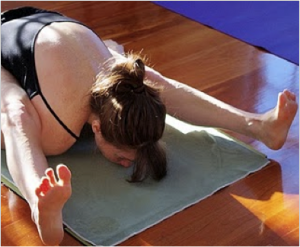This post is by Jennifer Brown Banks of Penandprosper.
For today’s woman, there seem to be messages daily (both subliminal and overt) that suggest that we don’t quite measure up.
For example: the commercials that convince us to lose weight, strive for bouncier hair, or transform ourselves through make-overs. Messages that, like the army’s slogan, command us to “be all that we can be.”
My goal at this stage of the game? To “be all I can be” before 10 p.m.
Men reportedly don’t have it as bad. According to Artofmanliness.com, they tend to have inflated egos, rather than low self-esteem.
Meanwhile, for the woman of color, it gets even tougher, as our lifestyles, diet, divine design, and body dynamics differ from other groups.
As further proof of the pressure put on African-American women, I’d like to point out a recent survey, published in Psychology Today. It sought to convince us that women of color were deemed less attractive than other cultures, according to some reported “findings“.
Really? Have you seen Beyonce? Tina Turner? Janet Jackson? Tyra Banks? Halle Berry? Michelle Obama? Hello?! (And if this is true, why is it that other groups sometimes strive to emulate our features and fabulousness through lip injections, tanning, and other procedures?) In fact, the assertion was so absurd that I wasn’t offended. I chuckled and moved on.
But, I wasn’t always this way.
There used to be a time, in my younger years, that every slight, every criticism, every rejection, was personalized and had me doubting myself and trying to “fix” whatever had been pointed out as a shortcoming.
To add insult to injury, I often felt the need to justify my actions to others, and prove myself at great lengths and with great expense to my emotional, mental, and spiritual health.
But age brings about wisdom, folks!
I now realize that true beauty can’t be bought in a bottle. That, as Eleanor Roosevelt stated, “No one can make you feel inferior without your consent.”
And the pay off? I have less stress. Fewer migraines. A good blood pressure rate. More peace of mind. More focus on things that really matter.
And you can too, (whether you’re a man or woman) if you heed the following:
- Recognize that we are all flawed and limited by our human nature. We have little control over genetics, mother nature, or father time.
- Recognize that self-esteem is a do-it-yourself project. Nobody can give you self worth; it comes from self acceptance and the knowledge that no one else is like you in this whole world.
- Recognize that self-esteem is like a coat of armor that shields you from harsh blows and assaults on your soul and your psyche.
- Recognize that perfection should never be a personal goal; instead, strive for excellence.
Yep, the better you feel about yourself, and the more at home you are in your own skin, the more you can exist in a state of liberation and peace. And that truly is a groovy and beautiful kinda’ thing.
Jennifer Brown Banks is a veteran freelance writer, Pro blogger, relationship columnist, and incurable romantic. Her work has appeared extensively online at sites such as Daily Blog Tips, Technorati, WorkAwesome, Search Engine Journal and Divorce2Dating.com. She blogs at http://Penandprosper.blogspot.com/.








Recent Comments